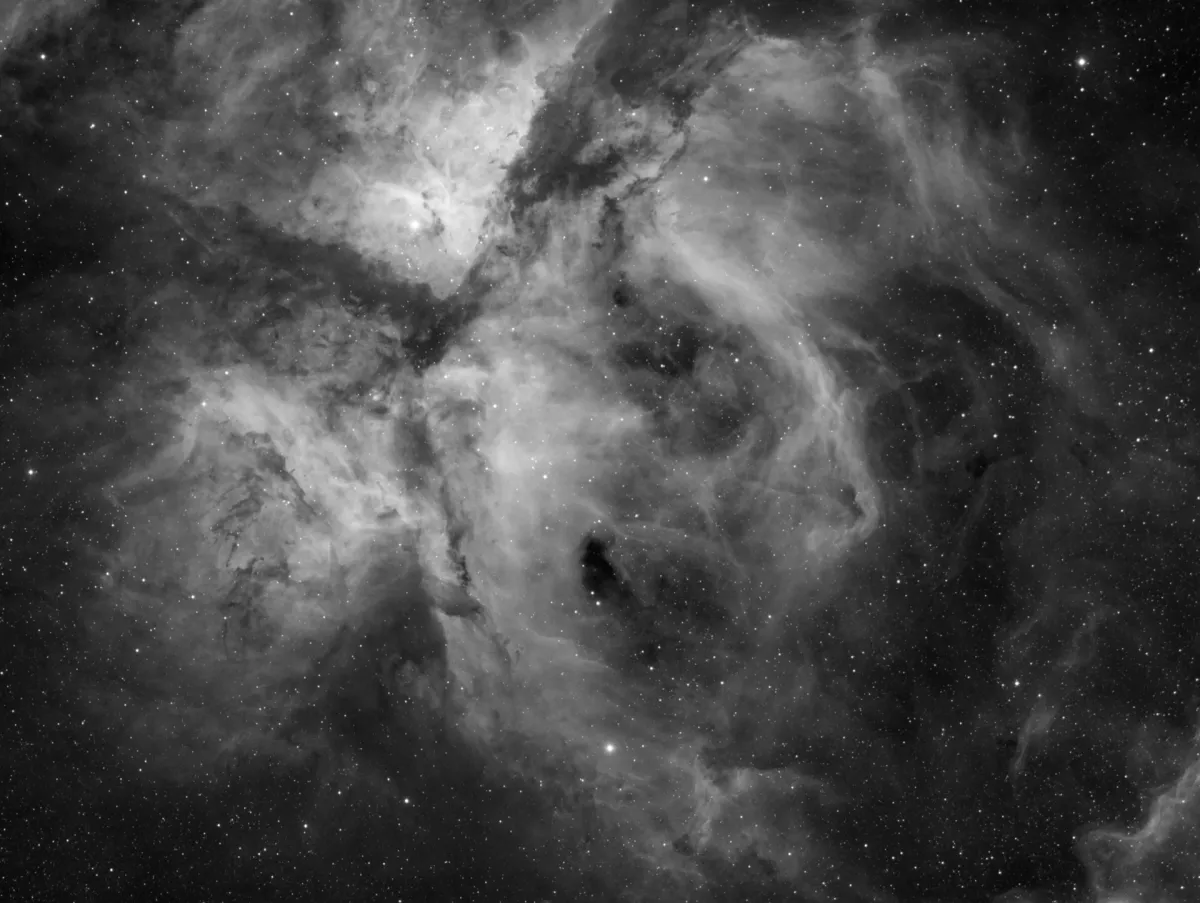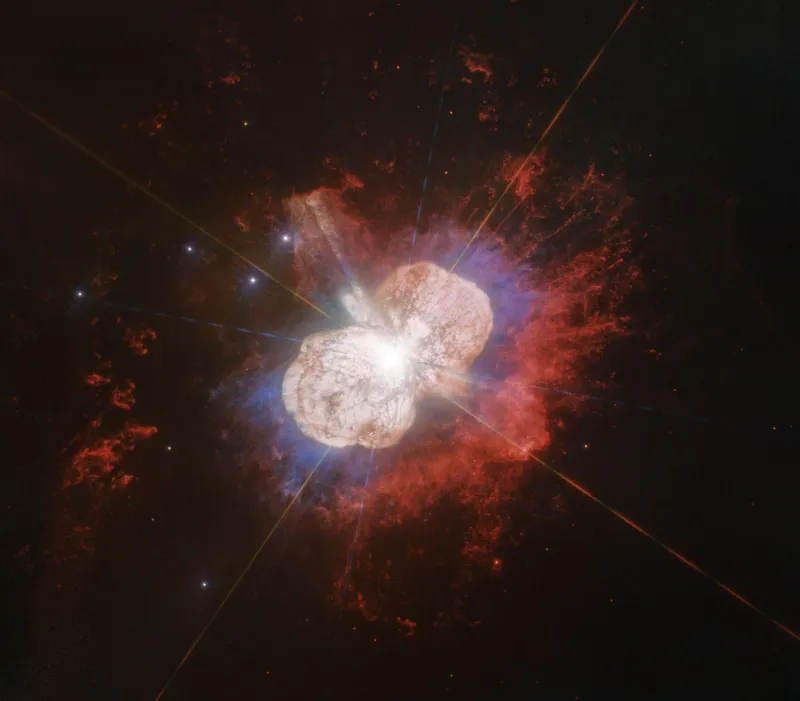Eta Carinae Nebula (NGC 3372)


History
During his expedition to the Cape of Good Hope French astronomer Nicolas-Louis de Lacaille discovered in 1751-1752 the cluster and nebula NGC 3372 (Lac III-6) using his small ½-inch telescope with 8x magnification. He recorded a «Large group of a great number of small stars, little compressed, and filling out the space of a kind of a semi-circle of 15 to 20 minutes in diameter; with a slight nebulosity spreading in that space.» The nebula and embedded clusters are visible by naked eye and were probably known before by sky watchers on the southern hemisphere. [364]
Scottish astronomer James Dunlop observed NGC 3372 (D 309) with his 9-inch reflector at least 13 times beginning on 30 March 1826 from Parramatta in New South Wales, Australia. He summarized his observations as follows: «(Eta Roboris Caroli, Bode) is a bright star of the 3rd magnitude, surrounded by a multitude of small stars, and pretty strong nebulosity; very similar in its nature to that in Orion, but not so bright... I can count twelve or fourteen extremely minute stars surrounding Eta in the space of about 1'; several of them appear close to the disk: there is a pretty bright small star about the 10th magnitude north following. the Eta, and distant about 1'. The nebulosity is pretty strongly marked; that on the south side is very unequal in brightness, and the different portions of the nebulosity are completely detached, as represented in the figure [plate III, figure 14]. There is much nebulosity in this place, and very much extensive nebulosity throughout the Robur Caroli, which is also very rich in small stars.» [50]
John Herschel observed «η Argus and the great Nebula surrounding it» (h3295) at least three times between 14 March 1834 and 4 February 1835 using his 18½-inch reflector at Feldhausen on the Cape of Good Hope in South Africa. On plate IX he made a detailed sketch of the nebula and dedicated several pages of description, which begins with: «There is perhaps no other siderial object which unites more points of interest than this. Its situation is very remarkable, being in the midst of one of those rich and brilliant masses, a successsion of which curiously contrasted with dark adjacent spaces (called by the old navigators coal-sacks), constitute the milky way in that portion of its course which lies between the Centaur and the main body of Argo. In all this region the stars of the milky way are well separated, and, except within the limits of the nebula, on a perfectly dark ground, and on an average, of larger magnitudes than im ost other regions.»

Herschel also noticed that the star η Argus (today η Carinae) had increased in brightness. From 4th magnitude in Halley's catalogue of 1677 to second magnitude in Lacaille's catalogue. When he first observed it in 1834 it appeared to be a very large star of second magnitude. The star drastically increased in brightness and on 28 December 1837 it was superior to Rigel (β Orionis) and could be compared with α Centauri. [11] This observation marked the beginning of the great eruption 1837–56 which formed the Homunculus Nebula, discovered in 1944. [664, 665]
Physical Properties
The binary star system η (Eta) Carinae is one of the most massive and luminous binaries in our local galaxy. The two stars are locked in a highly eccentric orbit with a period of 5.5 years. The luminous variable primary star is orbited by a secondary that is a classical Wolf–Rayet star. The Great Eruption of 1837–56 that formed the Homunculus nebula was recently modelled to be the product of a binary merger in a triple system leading to the current orbit. [666] Eta Carinae is not only interesting because of its past, but also because of its future. It is one of the closest stars to Earth that is likely to explode in a supernova in the relatively near future (in astronomical timescales this could still be be a million years). When it does, expect an impressive view from Earth. [667]
| Designation | NGC 3372 |
| Type | EN |
| Right Ascension (J2000.0) | 10h 45m 06.0s |
| Declination (J2000.0) | -59° 52' 00" |
| Diameter | 120 × 120 arcmin |
| Photographic (blue) magnitude | 3.0 mag |
| Metric Distance | 2.300 kpc |
| Dreyer Description | ! Great neb, η Argûs |
| Identification, Remarks | h 3295; GC 2197; ESO 128-EN13; Eta Car nebula |
Finder Chart
The nebula NGC 3372 is located in the constellation Carina around the 6 mag bright star η Carinae. Unfortunately it is not visible from Europe. On 29 February it in opposition with the Sun and is therefore highest in the sky at local midnight.
